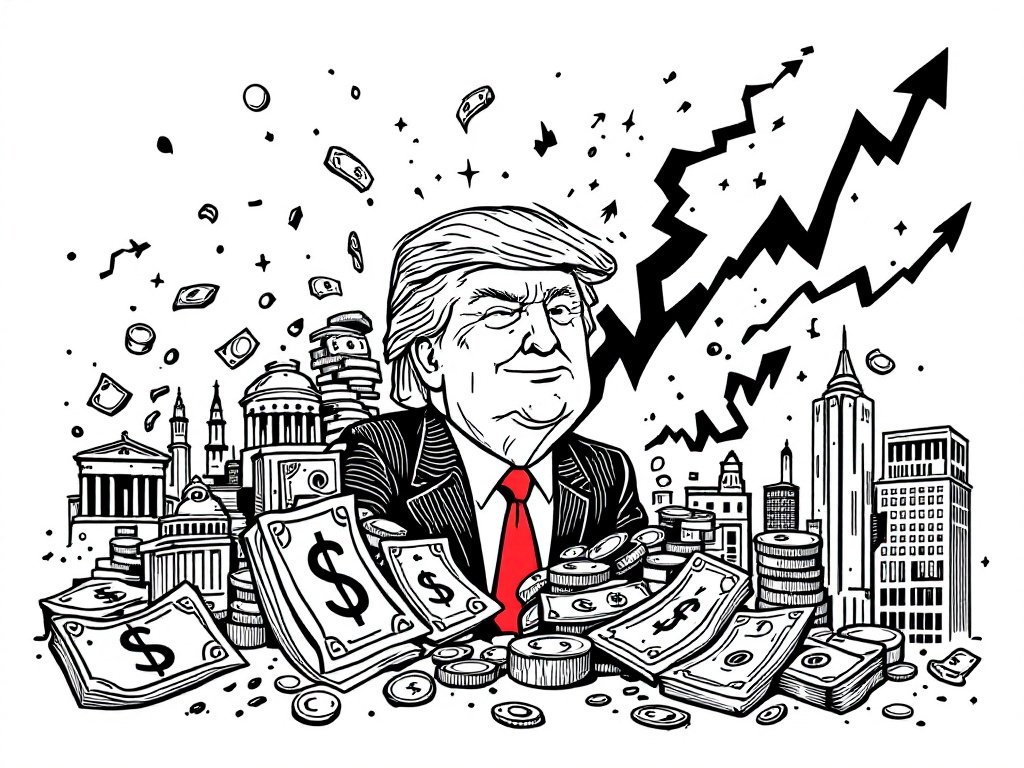Trump's First 100 Days: Economic Turmoil and Tariff Debacles

Washington, D.C., Monday, 28 April 2025.
President Trump’s early policies have pushed the US economy towards instability, with high tariffs and trade wars triggering financial uncertainty. Approval ratings are lower than any president in 70 years.
Introduction to Economic Instability
President Donald Trump’s initial 100 days in his second term have been marked by aggressive economic policies that have driven the United States close to the brink of a financial crisis. His policies, including a substantial reliance on tariffs, have impacted consumer sentiment and business operations across the nation, culminating in growing fears of an imminent recession [1][2].
The Tariff Turmoil
A centerpiece of Trump’s economic strategy has been the imposition of high tariffs, particularly on Chinese imports, which have soared up to 145% at one point. Despite recent announcements that tariffs may ‘come down substantially,’ the damage has already rippled through various sectors. Major U.S. companies have faced operational disruptions, with several airlines reducing flights and retailers ceasing sales of China-made goods [1][3]. These tariffs are part of a broader economic confrontation with China, characterized by fraught negotiations and geopolitical tensions [2].
Political and Economic Repercussions
The political consequences of Trump’s economic decisions have been profound. His approval rating on handling the economy has plummeted to 39%, with significant disapproval of his approach to tariffs and inflation control. This dissatisfaction is mirrored in his overall job performance rating, which has seen a steep decline to 41%, historically low for any president within their first 100 days in office [4][5]. The administration’s economic measures have also led to a decrease in consumer confidence, reflected in the CNN Fear and Greed Index, which has been registering ‘fear’ or ‘extreme fear’ for the last month [1].
International Reaction and Negotiations
Internationally, Trump’s economic policies have prompted varied reactions. While the U.S. administration claims ongoing trade negotiations with China are in progress, the Chinese government has denied any active trade talks, insisting on a total pause of tariffs before engaging. This standoff has implications far beyond the U.S. and China, affecting global supply chains and prompting other nations like Japan and the European Union to distance themselves from U.S.-led economic strategies against China [3][6].
Future Prospects and Concerns
Looking forward, the path of Trump’s economic policy continues to evoke concern among experts and stakeholders. The potential downgrading of tariffs may provide some relief, yet the long-term impact on the U.S. economy remains uncertain. Inflation and supply chain disruptions loom large as significant challenges, with the Federal Reserve and the International Monetary Fund expressing caution about the country’s growth prospects [1][4][5]. As Trump’s administration presses on with its agenda, the balance between short-term tactics and long-term economic stability remains a pivotal concern [7].
Sources
- www.cnn.com
- www.vox.com
- www.epi.org
- www.forbes.com
- www.cbsnews.com
- www.washingtonpost.com
- www.nbcnews.com